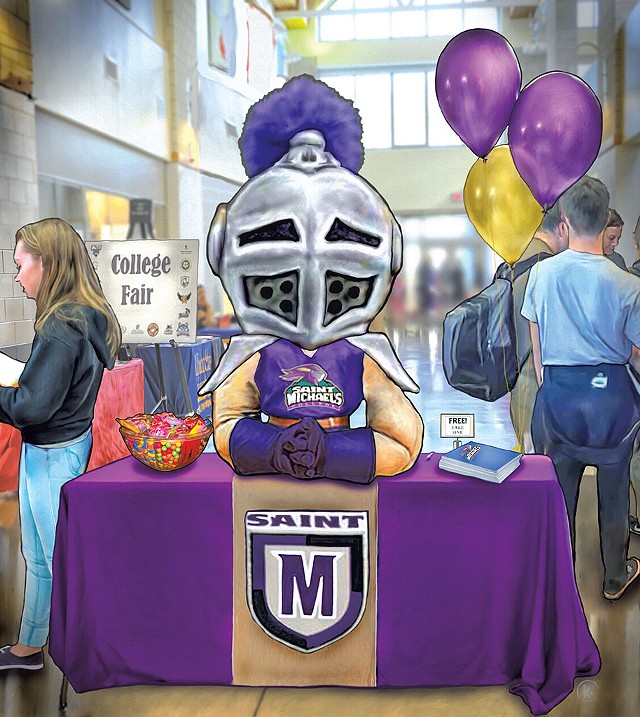
- Kym Balthazar
Liz Hogan and Emma Valeri shared a café table in the state-of-the-art student center at Saint Michael's College on a recent rainy Wednesday morning. Typing on their MacBooks, the Pembroke, Mass., natives were just two weeks into their first year at the Catholic liberal arts school in Colchester.
Valeri chose the small college after visiting the campus. She noted that St. Michael's pays prospective students to visit by reducing their tuition $1,000 a year if they enroll.
Financial aid swayed Hogan. Fordham University was her first pick, but "I got more money to go here," she said.
St. Michael's courted both women with more than financial incentives; they even got cards from the college on their birthdays.
While Hogan and Valeri ultimately chose St. Michael's, they are members of the smallest group of freshmen in at least 15 years; at 465, the class size is down nearly 10 percent from last year.
That drop in enrollment is one sign of St. Michael's struggle to meet the serious challenges facing small liberal arts colleges across the country, as the number of high school graduates declines and students turn away from the humanities. In response, the college has simultaneously stepped up its efforts to recruit students and begun to shrink its faculty and staff.
While its leaders insist that the college has a healthy future, St. Michael's expects to end the current year with a deficit — its third in a row. The school has given "separation packages" to 53 faculty and staff to reduce expenses, and a new round of buyouts is under way.
The downsizing reflects the philosophy of the college's departing president, John "Jack" Neuhauser, who warned that St. Michael's should prepare for a future in which student bodies will inevitably shrink.
"Somewhere along the line, we've got to be 20 percent smaller in what we do," Neuhauser said in 2013.
Demographic trends support the president's prediction. The number of high school graduates in the Northeast has been declining since 2009. It will continue to drop from 610,600 this year to 562,500 by the year 2031, according to the Western Interstate Commission for Higher Education.
Many of those graduates want a degree that leads directly to a job, rather than a liberal arts education that offers no future financial guarantee. Of the 20th century "golden age" of a wide-ranging higher education, Neuhauser said simply this month: "It's over."
That leaves St. Michael's — ranked 106th among liberal arts schools by the U.S. News & World Report — vying with elite colleges across the Northeast for limited, and skeptical, students.
"The competition is beyond fierce," said Sarah Kelly, the school's vice president for enrollment and marketing.
St. Michael's doesn't have a huge endowment compared to schools such as Middlebury College and Harvard University. That means every student — and, more to the point, his or her tuition check — will be crucial to its survival.
From France to a Farmhouse
Catholic priests fleeing anticlerical France founded the college that educated U.S. Sen. Patrick Leahy, millionaire CEO Richard Tarrant and National Public Radio Pentagon correspondent Tom Bowman. The Society of Saint Edmund came to Vermont, by way of Canada, to school French-speaking males between ages 10 and 22. The first classes were held in 1904 in a farmhouse on the site of present-day Founders Hall. Thirteen contemporary members of the order live on the campus today.
In the early years, according to the society's current leader, Father Stephen Hornat, "We had a farm, and students had to participate in raising the food and milking the cows. That's how we survived." His point: "We were never an institution that had a lot of financial resources."
The student body swelled as World War II veterans returned to school. In 1970, the college began admitting women, and the student population eventually grew to about 2,000 undergraduates.
Today, 50 percent of students are Catholic and 10 percent are from Vermont. They can choose from nearly 30 majors, although many gravitate toward biology, psychology or business. Nearly all live on campus, attending classes in ivy-covered brick buildings.
Named for an archangel, St. Michael's has emphasized social justice from the start. Its English-as-a-second-language program was created in 1954 to serve an influx of more than 100 Hungarian refugees who found their way to Vermont; later, Edmundites were active in the civil rights movement.
St. Michael's website touts the fact that 75 percent of its students do volunteer work; student-run fire and rescue squads operate 365 days a year. After graduation, last year's valedictorian went to work at an orphanage in Mexico.
Tom Torti, executive director of the Lake Champlain Regional Chamber of Commerce and a 1976 St. Michael's grad, said students preoccupied with résumé building learn a different lesson at St. Michael's. "That's good that you're doing stuff for you," is how he explained the college's attitude, "but what are you doing for the community?"
Other alumni confirm the school's ability to convert sometimes-self-absorbed teenagers into altruistic adults.
"It had a huge impact on my life," said C.J. Spirito, who credits the college with leading him to his current station: headmaster at Rock Point School, a Burlington boarding school for struggling high school students. St. Michael's "deepened my understanding of the importance of living in a community," Spirito said.
Leahy also describes his time at the Catholic college as transformative. "My education and becoming a part of the St. Mike's community made all the difference in the world in my young life, focusing my attention on what I wanted to do and be ... and challenging me to set those goals," he said in an emailed statement. "It's a self-selected community that is outward-looking and civic-minded. Shared experiences forge strong bonds and help cultivate students' individual consciences and their sense of morality."
Recalling a conversation he had with another alumnus, Gen. Joseph Dunford, chairman of the joint chiefs of staff, Leahy said, "We discovered that he and I see our years at St. Mike's in these same terms. Those years were not only the foundation of our futures, but developed the core of our consciences."
Shrinking Success
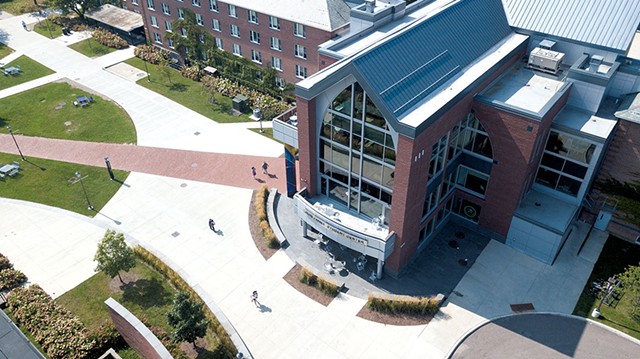
- James Buck
- Dion Family Student Center
St. Michael's white-haired president is soft-spoken and self-effacing, but his remarks to Inside Higher Ed in the 2014 article "Shrinking as a Strategy" didn't make him a whole lot of friends on campus.
The prevailing attitude among college presidents at the time was: "We're gonna be smarter than everybody else. We're gonna get bigger," Neuhauser explained in his dimly lit office in Founders Hall.
"I didn't think we were smarter than anybody else."
Neuhauser, who has a PhD in physics and was previously the dean of the business school at Boston College, determined that it was inevitable the school would lose students. Instead of resisting the trend, St. Michael's would prepare for it.
He told Inside Higher Ed he expected his school's student population to drop from 1,900 to 1,600 during the next several years, and the college would respond by reducing its faculty, largely through attrition, from 150 to 135. (As of the end of June 2017, St. Michael's employed 143 full-time professors.)
Initially, enrollment numbers seemed to disprove his thesis. A few months after the article, 614 freshmen arrived on St. Michael's campus — 71 more than in 2013.
"We had the great misfortune of having a very large class right after we said things would get smaller," recalled Neuhauser. He believes this undermined his credibility, preventing him from downsizing at the rate he'd planned.
Freshman enrollment dropped to 500 in 2015, increased by eight in 2016, then dropped again, to this year's 465 incoming students.
At Neuhauser's urging, St. Michael's had begun cutting expenses in 2014. Nonetheless, the loss in tuition money, which makes up 80 percent of St. Michael's revenue, seemed to catch the college off guard.
In fiscal year 2016, the college's annual operating budget of about $75 million showed a small deficit of about $200,000. Last year, officials were anticipating a $1.65 million shortfall for 2017, according to Rob Robinson, director of financial planning and business services. But he said this month that the final figure will be significantly smaller. He expects the college to end 2018 in the red as well. Those numbers would be higher if the school hadn't trimmed $2 million from its budget over the last several years.
"We've spent two-plus years looking under every proverbial rock for cost savings," said Robinson. Pebbles, too: Cuts have ranged from eliminating faculty positions to reducing the number of Wall Street Journal subscriptions in college offices.
Also in the interest of economizing, St. Michael's officials created the Green Mountain Higher Education Consortium in 2013 to share resources with Champlain and Middlebury colleges. The three schools have already saved money by purchasing office supplies and other resources as a group.
It's not a crisis — yet. "I'm not overly concerned where we've netted out the last two years," said board member Maureen Usifer, who is chief financial officer at Seventh Generation. The deficits have been small, she noted, and the college is planning to adjust expenses accordingly.
"We're not in danger of running out of cash," said Robinson, but "we can't maintain million-dollar-plus deficits forever."
'Keeping Up With the Joneses'
What's not on the chopping block? Scholarships. In fact, St. Michael's is giving out more money per capita than ever before. As the student body shrinks, it's dispensing the same total amount of financial aid — $40 million each year — according to Robinson.
"We're sort of on this unsustainable business path," Robinson acknowledged, explaining that colleges are offering increasingly generous packages to entice students, and "you have to offer more and more aid to, frankly, keep up with the Joneses."
It's a problem particularly for modestly resourced liberal arts schools. "You can't do it on the cheap," said Ellen McCulloch-Lovell, the former president of Marlboro College. "If you're attracting good faculty and ... offering even modest amenities, you're still going to have that gap between what students can reasonably pay and what it costs [the college]."
While elite schools such as Middlebury boast billion-dollar endowments, St. Michael's is a mere $90 million. Spending constraints on endowment money prevent the school from withdrawing more than about $3.5 million each year.
More aggressive fundraising would improve the situation. But St. Michael's hasn't run a major capital campaign since 2004.
Only 20 percent of St. Michael's alumni contribute to the roughly $4 million in donations it receives each year. "I think it's too low, and I guess I'm responsible," said Neuhauser. The outgoing president acknowledged that the school needs to work harder to pursue potential benefactors, particularly deep-pocketed ones.
The biggest expense at St. Michael's is its employees, and, in an effort to get people to leave voluntarily, the administration offered two rounds of buyouts this year.
Thirty-seven staff and 16 professors accepted, although some won't depart until 2018. New, and probably lower-paid, personnel will replace 17 staff and seven faculty positions.
The new recruits likely won't be adjuncts, though. Sharyn Layfield, an adjunct professor of English, has taught at the college for about 20 years, but she won't be returning next semester. "They're cutting back on as many of us as they can," Layfield said. "We're a logical group to cut because we have no power."
(They have more power than they used to; adjuncts at St. Michael's formed a union in 2014 and are currently negotiating their second contract.)
"It takes time to significantly reduce our expenses given that so much of our expense is people, and you want to be thoughtful and responsible in the ways that you do that," said Robinson.
Administrators claim they're achieving that reduction without diminishing the student experience. For example, no academic majors, sports teams or student clubs have been eliminated.
"The institution is actually handling this extraordinarily well," said Jo Ellis-Monaghan, who has taught at St. Michael's since the 1980s and is chair of the math department. While the school is trimming back in some areas, she noted that it's also adding offerings. "We're looking at establishing new programs in data science and statistics," Ellis-Monaghan said.
David Heroux, a chemistry professor and chair of the Faculty Welfare Committee, noted that St. Michael's recently added two new majors — environmental science and neuroscience. "I think we have a plan for getting on really solid financial footing again," he said.
Morale Compass
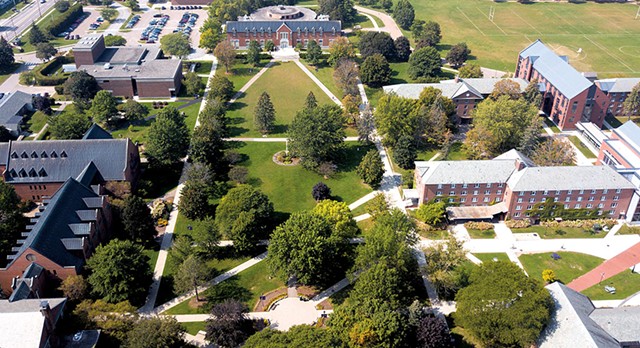
- James Buck
- St. Michael's campus
Concerns about St. Michael's finances are creating fissures in what many say is the school's No. 1 asset: its tight-knit community.
"Morale is not great right now," Heroux said, explaining that it's been hard to watch longtime colleagues leave.
Michael Bosia, a political science professor, pointed to the departure of a popular 30-year veteran of the department, William Grover, who took a buyout last spring and now teaches in Florida. "It's hard to build a reputation for excellent academics when you're not hiring the best faculty in tenure-track positions and not protecting the best senior faculty," Bosia said.
Although the college prides itself on a commitment to social justice and community involvement, the administration recently laid off the director of the Center for Women and Gender and the director of the Center for Community-Engaged Learning, the latter of whom worked to match students with local organizations. It decided not to replace the outgoing director of its Edmundite Center for Peace and Justice.
"Those three positions ... have been key to the integration of activism and service with academics," said Bosia. "Without those resources, it leaves us fumbling." A speaker series programmed by the Center for Peace and Justice often dovetailed with his teachings. For example, a Serbian activist supplemented a course he taught on democratic transitions. There haven't been any such talks so far this year, according to Bosia.
Tara Natarajan has taught at St. Michael's for 17 years and chairs the economics department. A number of students credit her with converting them to econ majors. But even her "booming" program hasn't been spared, Natarajan said. One professor is leaving, and she doesn't yet know if he'll be replaced.
She suggested that the top administrators take pay cuts before further depleting the faculty and staff.
"We've been very unhappy and dissatisfied," Natarajan said of her fellow professors. "I have certainly felt that the administration has placed what seems to me an unfair amount of the burden ... on faculty and staff," she said, adding, "We are the lifeblood of the place."
Remaining employees are taking on more duties. Professors are calling prospective students and representing St. Michael's at college fairs. "We aren't trained as marketing professionals, and yet we're increasingly called upon to do those things," said Bosia.
Some question whether the administration is upholding its end of the bargain. "Why wasn't fundraising made a priority when they keep telling us, 'We know that things are changing'?" Natajaran asks. "It's always been an enigma."
Along the same lines, the college built a new, 188-bed dorm in 2015 when enrollment had already started dropping.
Local real estate developer Ernie Pomerleau, an alumnus who was on the board at the time, said the trustees concluded that the school needed better dorms to stay competitive with other college, and they raised money and acquired debt responsibly. They were adhering to the attitude that "if you didn't plan for the future, you could very well not have one," he said.
Cutting Class
The changes at St. Michael's have not escaped the attention of the students.
Polly Corbett, a junior from Newburyport, Mass., is majoring in psychology. Sitting with two fellow juniors in the student center, she noted that three psychology professors, including her adviser, had taken buyouts.
"They bought out Jeff Adams?" asked Elizabeth Stapleton, a media studies, journalism and digital art major from Eastchester, N.Y. "Jeff Adams was such a homie!" she said, sounding dismayed.
Corbett was assigned another adviser and she, Stapleton and Annie Hogan agreed that they have fewer course options this year. But they are adapting, not jumping ship.
Earlier this month, the administration launched another round of buyouts but would not disclose the target number of employees or the value of their compensation.
The school is also preparing to overhaul its liberal arts course requirements. Dean Jeffrey Trumbower predicts that the resulting curriculum will be better for students — more flexible and relevant. It will almost certainly consist of fewer requirements. There's been discussion, for example, about ending a mandate that students take classes in a second language. That sort of talk has some professors worried.
"It's a bit of a gamble," observed physics professor William "Sandy" Karstens, referring to academic cuts at the school. "You might lop off a course and suddenly realize, Oh, I guess we sort of needed that."
Neuhauser acknowledged that hard choices are ahead. "It's not easy to decide. What are you gonna give up? Are you gonna give up medieval history or French or what?" he said.
"It's the family in the lifeboat — who are you gonna throw overboard?" he continued. "That's a pretty difficult decision."
Especially if "family" was the reason you set sail in the first place. St. Michael's prides itself on a teacher-student ratio that makes for plenty of one-on-one time. Kara Gailiunas, a business major, said she came to St. Michael's because "I didn't want to be a number."
Journalism professor David Mindich confirmed, "I've never been at an institution where faculty care more about their students." He left St. Michael's this summer for a job at Temple University in Philadelphia.
Catholics in Cold Places
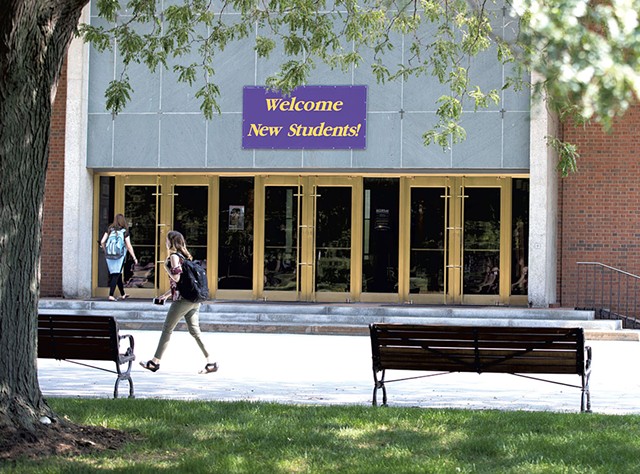
- St. Michael's campus
The woman in charge of recruiting St. Michael's students makes a spirited case for shrinking enrollment. "This is one of the smallest classes we've ever had, but it has the best academic profile and it's the most diverse," Kelly pointed out.
Another plus: The percentage of accepted students who enrolled increased from 11 percent to 17 percent, according to Kelly.
But no matter how you spin it, St. Michael's needs to attract more students.
How?
In addition to offering visit grants — such as the one first-year student Valeri took advantage of — the college started a program called SMC First Class, which allows prospective students to take a full-credit online course for free during their last semester of high school. Ninety people completed the course, and 73 percent ended up enrolling at St. Michael's, Kelly said.
To appeal to students who don't want, or can't afford, a four-year liberal arts education, St. Michael's is rolling out a three-year bachelor degree program. Students will be able to skip their last year by taking courses that are part online, part in-person during the summer months.
Attracting minority students in an increasingly diverse U.S. is an imperative, and currently only about 15 percent of St. Michael's student body is Asian, Latino, African American or Native American. Foreign students make up another 5 percent.
To improve those numbers, the admissions office is casting a wider net, in Colorado; Washington, D.C.; southern Florida; and Illinois. But it's a tough sell. Getting students of color to come to one of the whitest states in the nation is "an uphill battle," according to Kelly.
Winter can also be a deal-breaker.
"I am always looking for pockets of Catholics in cold places," Kelly joked. Massachusetts delivers the largest number of students to St. Michael's.
School officials cite another factor interfering with recruitment.
"We don't brag, and we need to," Kelly said. Board chair Mary-Kate McKenna agreed: "We can't be so quiet and humble about what we do."
Neuhauser, too, has warmed to the idea. "I've kind of resisted anything to do with marketing, and I think that's just a personal bias, and it was probably a mistake. I think we do have to do that," he said.
The college has hired outside help to hone its image. Ologie, an Ohio-based marketing and branding agency, will help the school determine which students to target and how to sell itself to them. That work will entail surveying current students, faculty and staff and holding focus groups with high school students, Kelly said.
Aided by new-and-improved recruitment strategies, Kelly projects that St. Michael's will enroll 510 freshmen a year for the next four years. Factoring in the reality that 10 percent of students drop out or transfer, Kelly estimates the school will have about 1,850 students a few years from now — only about 50 fewer students than it has now.
And what if the expected number of students doesn't materialize? Neuhauser said he thinks the school could survive with as few as 1,600 undergrads, but becoming any smaller would require "a major restructuring."
Either way, he won't be around to deal with it. Neuhauser told the trustees he was ready to leave the college back in 2014, the same year the controversial "Shrinking as a Strategy" article came out. "They asked me to stay on a little longer, and I agreed to do that," he said. He's scheduled to leave in June 2018.
Eager for new leadership, many at St. Michael's are resting their hopes on the college's 17th president, who will be selected early next year.
Mindich suggested the school needs a leader who can raise money and "tell an inspiring story about the school not only to external forces but also to the students and the faculty."
McKenna, chair of the presidential search committee, said she's looking for "someone who is dynamic and entrepreneurial — someone that can lead the college in a different direction. We can't keep being this sleepy hidden gem."
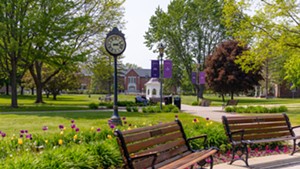


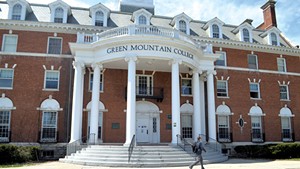
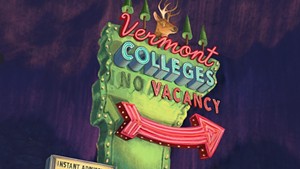






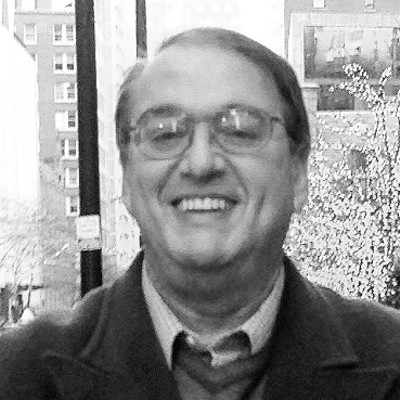
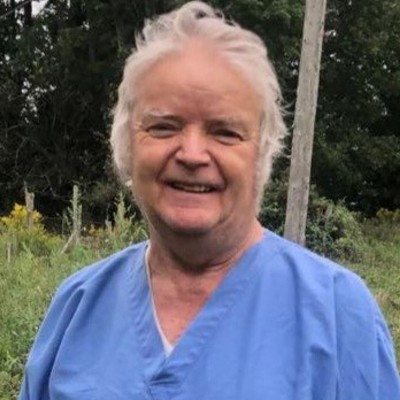
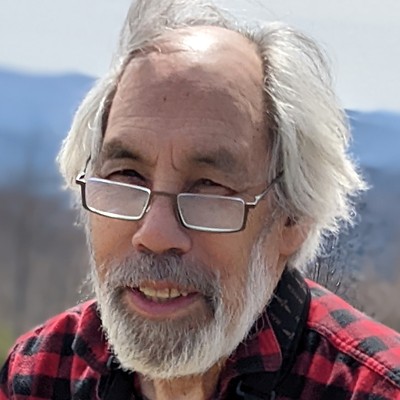
Comments (3)
Showing 1-3 of 3
Comments are closed.
From 2014-2020, Seven Days allowed readers to comment on all stories posted on our website. While we've appreciated the suggestions and insights, right now Seven Days is prioritizing our core mission — producing high-quality, responsible local journalism — over moderating online debates between readers.
To criticize, correct or praise our reporting, please send us a letter to the editor or send us a tip. We’ll check it out and report the results.
Online comments may return when we have better tech tools for managing them. Thanks for reading.